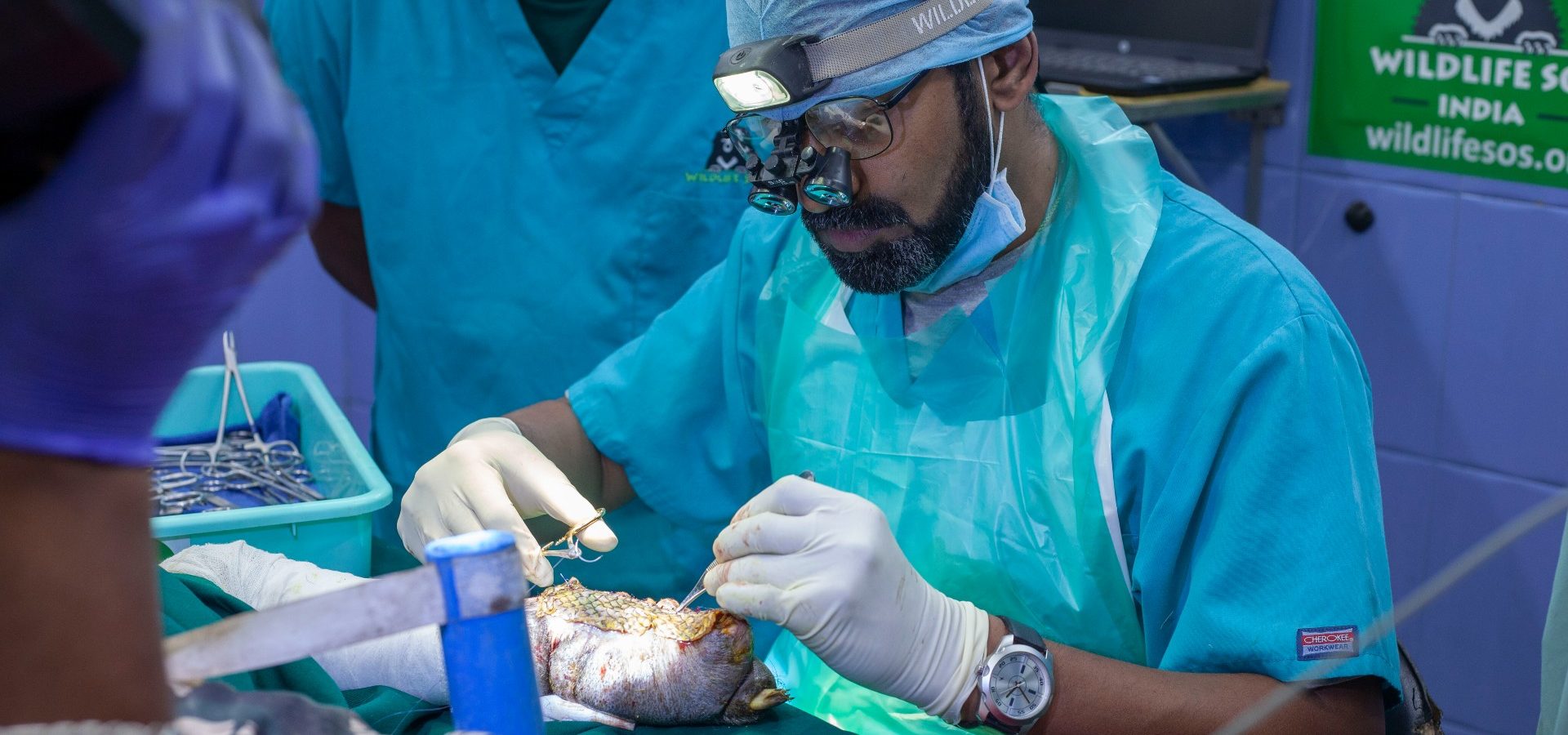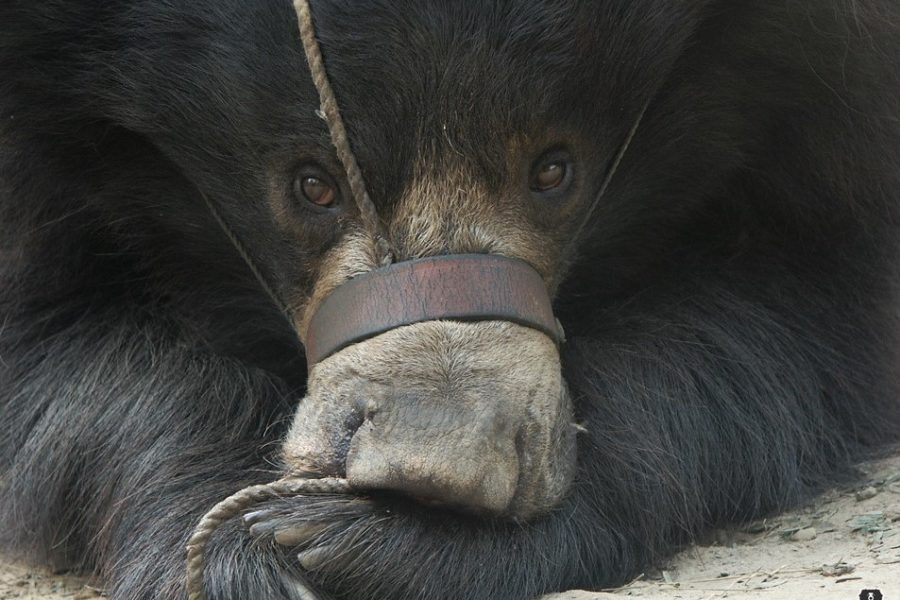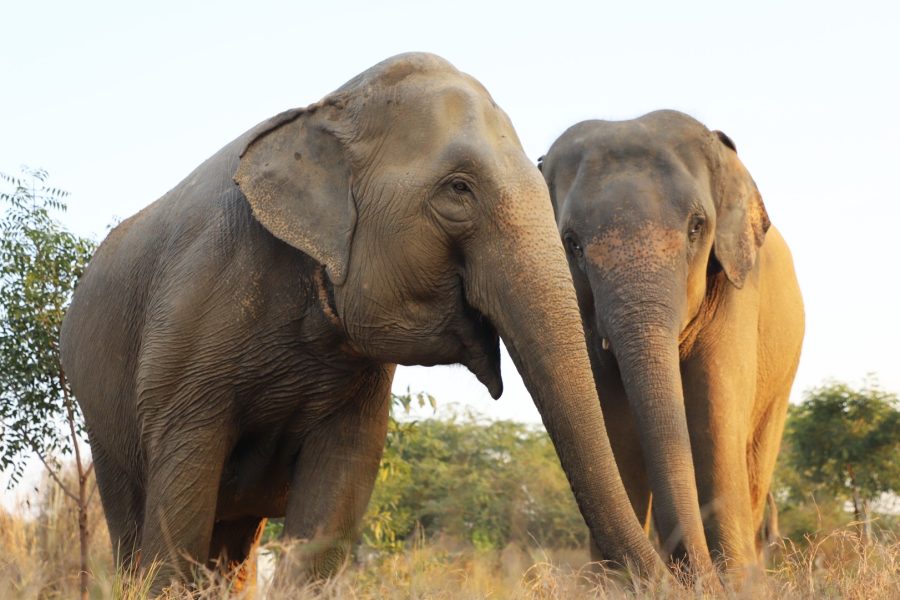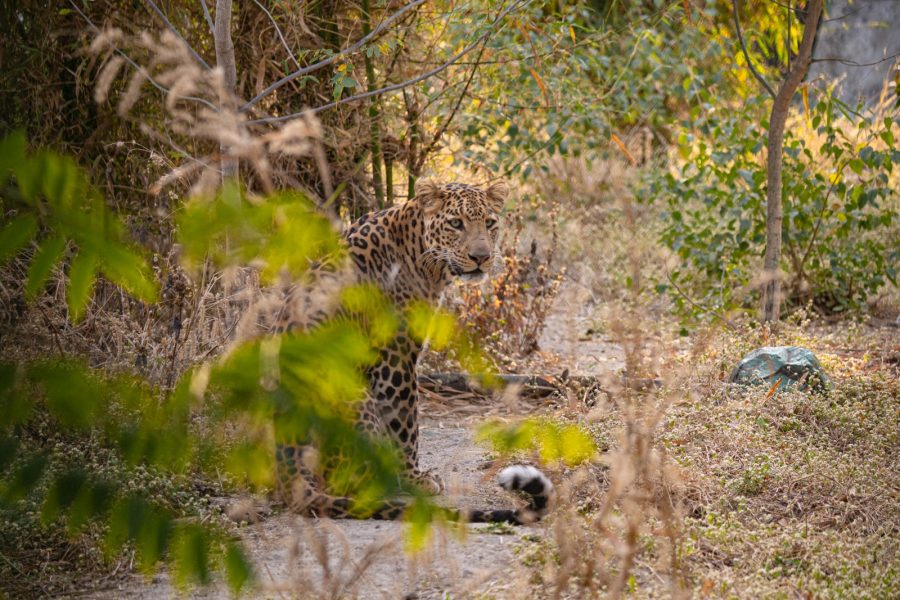Today, numerous animals require rescuing from various situations. As an organisation that actively runs and manages over 10 rescue centres across the country, it is no surprise that each of our facilities is a sanctuary to many animals that are under the long-term care of Wildlife SOS.
Animals staying in captivity for a long period of time often face a score of health challenges due to the conditions from which they were rescued. Among the three major species that remain under our care are bears, leopards and elephants, and they can all pose different types of obstacles that our veterinary team have to overcome. These can range from tuberculosis, dental problems and arthritis in bears, to ocular and foot-related issues in elephants and physical disabilities in leopards.
Health Challenges in Bears under our Care
Many bears at our rescue facilities have been rescued from the Kalandar community as ‘dancing’ bears that were kept in unsanitary conditions. The bears were poached as cubs directly from the wild and their teeth, especially canines, were smashed to prevent them from attacking. This leads to our rescued bears being prone to develop tuberculosis and dental problems in their later years.
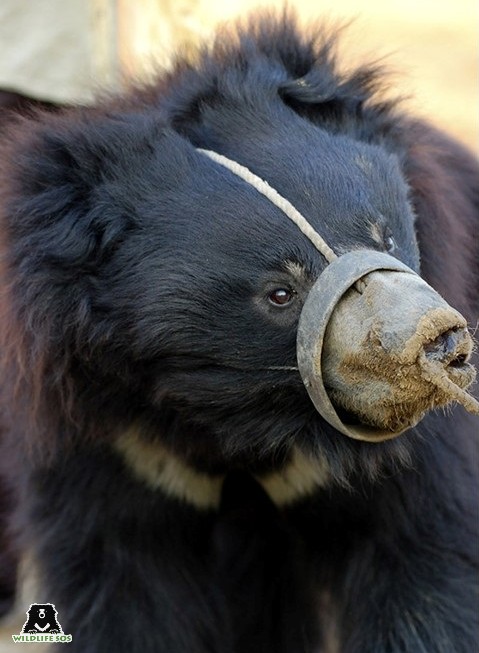
In case of dental issues, the exposed and rotting teeth can lead to several infections and mouth ulcerations. Painful dental problems can alter bear behaviour, which in turn can impact their diet. Think of how humans have difficulty in eating while suffering from dental pain!
Another issue that rescued ‘dancing’ bears often experience is arthritis in hip joints, because of which they experience immense pain in the limbs. There are several factors that can contribute to the development of arthritis. Just like in humans, it can be due to injuries or simply due to old age. A bear with arthritis may no longer be able to bear the body weight on its limbs due to the affected joints and bones. As ‘dancing’ bears, they are frequently made to perform while standing upright on their hindlimbs. Maintaining the posture frequently causes immense stress on the bones of sloth bears.

Another major issue that can arise, especially in sloth bears, is aggression. Sloth bears cubs are dependent on their mothers during the formative years, but as they grow, they become more solitary as they mature and age. However, most bears under our care were separated from their mothers at a very young age. Keeping them in isolation is not recommended as that can lead to aggressive behaviour. At our centres, rescued sloth bears are given the chance to socialise and engage in healthy mock-wrestling sessions.
Issues with Elephants Freed from Captivity
Out of all the rescued animals at Wildlife SOS, elephants arguably face the most amount of health challenges. This is caused mostly due to the longevity of their captivity and the nature of physical abuse perpetrated by their previous owners. From extensive tail injuries to broken tusks and even a whole missing ear, the stories are endless.
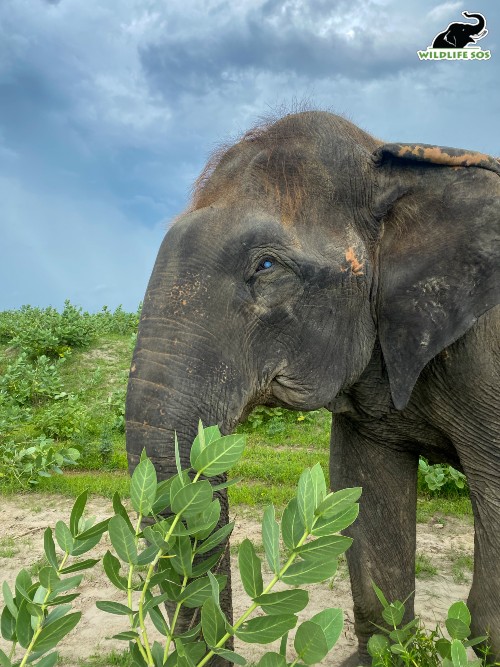
But what elephants experience the most are foot and eye-related problems. Most elephants are rescued from being used in the begging, tourism (for riding) and entertainment industry (in circuses). And the one common thread in all these cases is how they are compelled to walk on unnatural, man-made surfaces such as concrete and tar roads.
This leads to grievous foot-related problems such as foot rot, foot pad and toenail abscesses, arthritis, hygroma (formation of fluid filled sacs) in joints and degenerative joint disease. Combine with this the horror of blinding an elephant purposely to dupe onlookers and use the animal to beg for money. Complete or partial loss of vision worsens the situation of the elephants who already suffer so many foot related issues.
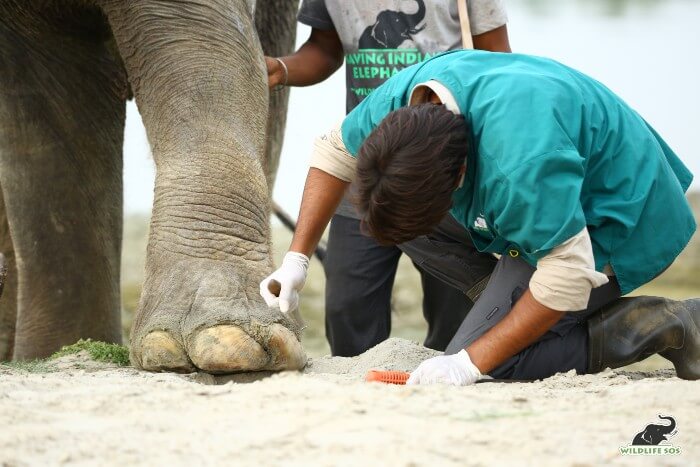
One of the most evident cases in recent history is that of Nina, a 60-year-old blind elephant who had chronic osteoarthritis, and foot pad abscess on her hindlimb when she was rescued. This forced Nina to shift weight onto her forelimbs, which resulted in weakening and swelling of those limbs. An elephant already carries 60% of their body weight on the forelimbs but putting more weight on them is bound to damage the limbs. Unable to bear weight on limbs can restrict the locomotion of elephants, thereby encouraging swelling and foot pad abscess formation. As a result, Nina could not lie down for a prolonged period due to her condition.
Problems Noted in Rescued Leopards
The leopards living under the long-term care of Wildlife SOS have been rescued from human-wildlife conflict, as orphaned and abandoned cubs, and from poaching attempts. Though not as extensive as bears and elephants, the rescued leopards do have a few instances which can be challenging for the veterinary team. Leopards rescued from conflict and poaching attempts may carry disabilities as a result of an injury, which can pose future challenges in managing the physical health of these particular animals.
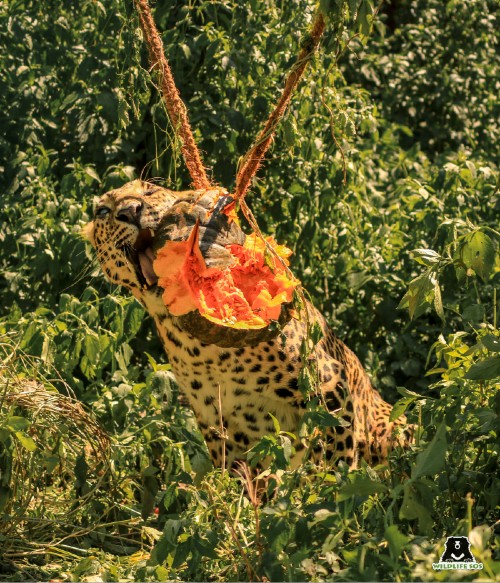
One such leopard, Ganesh, was caught in a conflict as a cub and was attacked by a group of people. In the incident, Ganesh was rendered wounded and his left eye was severely infected. So, our veterinary team had to surgically remove the eye to stop the infection from spreading. His right eye also developed a cataract, which ultimately led to loss of vision in both his eyes.
Shivani is another resident leopard who is physically impaired and has a missing limb. Due to an accident at a young age, Shivani lost her entire right forelimb and she is a three-limbed resident at our Manikdoh Leopard Rescue Centre. Caring for physically handicapped leopards like Shivani and Ganesh therefore calls for special arrangements. In addition to physical injuries and handicaps, leopards are also faced with issues related to the two extreme ends of the age axis – youth and old age.
The situation with leopard cubs requires treading with sensitivity as orphaned or lost cubs remain in delicate conditions. As soon as they arrive, the cubs need adequate attention and nourishment, and without nutrition cubs can grow dangerously weak.
Old leopards, on the other hand, have their own set of health issues. Some of these are very common to senility, such as loss of appetite, dental problems, joint issues, weaker immunity and an overall drop in activities. The leopards suffer several dental issues as they grow old, including broken teeth, accumulation of plaque and tartar and root problems. Dental problems hinder their ability to chew food properly and results in inappetence.
Managing Health Problems of Rescued Animals
Wildlife SOS focuses on providing the highest grade of care to our rescued animals despite the various health challenges they face. Due to his complete loss of vision, Ganesh depends entirely on his senses of smell and sound to move around his enclosure. The care staff are aware of this and prepare olfactory sensory enrichments for Ganesh. Similarly, knowing Shivani’s limitations, the leopard care staff create structural enrichments for her (such as a platform) at a much lower level. These efforts are to assist her in climbing the platform easily, while also making sure she remains active.
In the case of cubs, our caregivers prepare a special milk formula in feeding bottles with the perfect temperature that suits the cubs. The cubs have to go through intensive care in the first 30 days, where they have to have up every two hours to prepare and feed them the formula. This is crucial, because if a cub refuses to drink the milk, it may end up becoming dangerously weak.
Meanwhile the old leopards at our centre are placed under specialised geriatric care. The veterinary team performs dental check-ups to clean the tar and look for half-broken teeth or blunt canines that may pose a problem. Even their meals are washed in hot water, serving the dual purpose of proper disinfection and softening of the food.
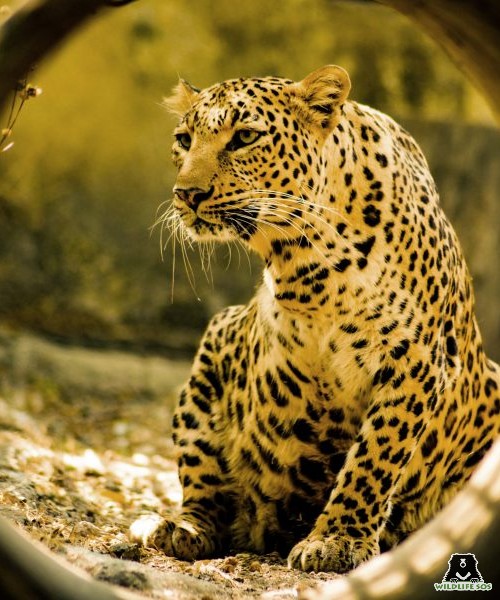
For elephants with foot related problems, the Elephant Hospital Campus and Elephant Conservation and Care Centre are geared with premium medical equipment such as wireless digital radiology, laser therapy machine, digital X-ray, portable X-ray, thermal imaging and hydrotherapy pools. Laser therapy massages provide relief to an elephant’s ailing limbs on a cellular level, whereas medicated foot baths with magnesium sulphate and turmeric, and ice fomentation cater to abscesses.
To tackle arthritis in bears, the Wildlife SOS veterinary team opts for the general treatment of pain medications, supplements and laser therapy. Regular laser therapy sessions relieve them from stiff joints and accelerate healing. The bears get their medicines as either mixed and crushed in the porridge or hidden in dates. Calcium and phosphorus are also provided in sufficient quantity, along with glucosamine and chondroitin supplements. The supplements not only control further deterioration of bones, but also alleviate pain.
Further, dental hygiene receives equal importance given the teeth conditions rescued ‘dancing’ bears were found with. Wildlife SOS’ veterinary team has led the way forward in root canal treatments (RCT) and tooth extractions. They have successfully performed surgeries on rescued sloth bears at our centres. Treating dental issues allows eradicating problems such as inappetence, discomfort and moody behaviour!
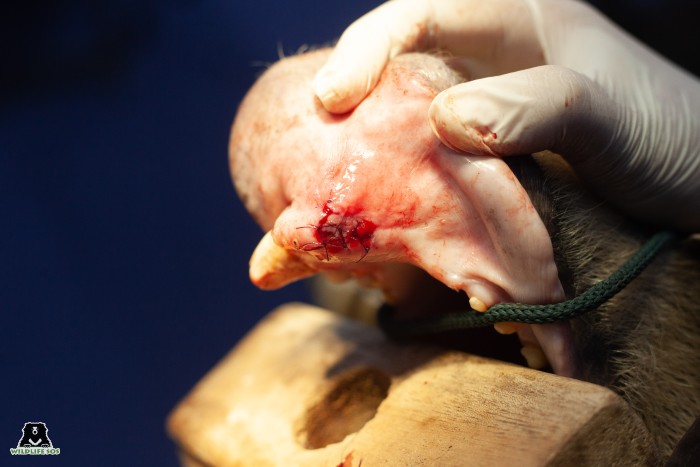
Wildlife SOS has risen on every occasion where we were faced with complicated health problems in our rescued animals. But it was only possible because of the well-equipped facilities, the skilled veterinarians and the care staff. However, maintaining them is a resource-intensive task for which we always require financial support. If you wish to see us continue the work of treating animals in need, consider becoming a monthly donor for Wildlife SOS.

